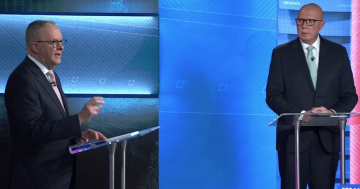Saying no, especially to your boss, can bring about difficult workplace moments but Brian de Haaff* says it can sometimes be necessary for your benefit and for the organisation’s.
 We are all getting older, and that is a good thing, but as we age, our brains remove unimportant neural connections and consolidate the essential ones.
We are all getting older, and that is a good thing, but as we age, our brains remove unimportant neural connections and consolidate the essential ones.
By removing the synapses we no longer need, we can continue to efficiently learn new information over time.
I believe a similar type of pruning is necessary for long-term success in any endeavour — including at work. We need to say no more often.
Saying no to big requests and even opportunities can be difficult, but it is vital to sustainable growth and achievement.
I understand why most people struggle to say no. You want to be seen as capable and diligent; you want to do your part to support the team and help your colleagues.
Many of us want to please others. If you are early in your career or have recently started a new role, you might feel additional pressure to be agreeable.
Many organisations tacitly promote a culture of ‘yes’, where questioning or pushing back is seen as risk-averse or anti-innovation.
I am not suggesting you shirk your responsibilities or put up a fight when you are asked to do important work that might be hard or you might not be that fond of.
After all, a knee-jerk reaction of ‘no’ can be just as harmful as ‘yes’.
The point is that pausing to evaluate the value and opportunity cost of someone’s ask allows you to make a wiser decision.
Our team at Aha! follows The Responsive Method (TRM), our framework for achieving sustainable success.
One of the key principles of TRM is interrupt-driven — we listen carefully and respond quickly to each request we receive, tuning in to those that will help us create more value.
Recently we knew we also needed to codify that we are open to ‘no’ — as we grow, we are not afraid to turn down opportunities in order to stay true to our core values and goals.
Being authentic to who you are and what you are working towards is how you achieve sustainable excellence over time.
This is true whether you are a leader or an individual contributor.
Since you cannot agree to every project, meeting, deadline, or offer, you need a framework for determining when to say no.
The following questions are meant to help you identify relative importance, so you can confidently (and respectfully) decline when needed.
Clarify
Good decision-making starts with understanding the need.
Make sure you grasp exactly what the person is asking for and why. Then dig deeper into the details and logistics of when and how.
Strategise
Goals are your guideposts, they inform every decision you make.
Besides considering how saying no will impact the organisation, team, or individual objectives, reflect on how the ask aligns with your current priorities.
Perhaps you are not the right person to fulfil the request, but a teammate is.
Empathise
Often there is a deeper need hidden beneath the surface of a request.
Uncovering this nugget of truth requires that you empathise with the person coming to you for help.
Try to imagine what they are feeling and why they chose to reach out to you.
Quantify
If you need more context to make an informed decision, gather relevant data points from other teammates.
Quantifying the business impact can help you evaluate the resources required versus the rewards you will net.
For example, software as a service companies typically forecast the impact on revenue, churn, or trial numbers, but the specific metrics you track will vary based on your organisation.
Ideate
‘No’ does not have to end the conversation. If you can, expand upon your nay by coming up with viable ideas and alternatives.
This could mean that you recommend delegating the work to someone else or pushing the timeline later.
Or you might advocate for why the team should not pursue the initiative at all.
Collaborate
Meaningful solutions are often borne out of compromise, so spend a few minutes explaining your decision and how you arrived there.
Be transparent and kind as you share your thoughts and offer suggestions.
Then listen to the other person and work together to identify an even better path forward.
Saying ‘no’ is a skill like any other — the more you practice vocalising your truth to others, the more confident and assertive you will feel.
The framework above might seem long, but with practice you can move through it fairly quickly and even spot patterns in people’s requests.
Of course, it is worth acknowledging that you might not have the option or influence to say no to your boss or teammates.
In this case, ask your manager to help you identify the types of assignments where there might be some flexibility.
If you are ever unsure how a request links to a high-level goal, ask for clarification.
When you value your time and focus on what is most important, you can achieve long-term success — sometimes you just have to be willing to say no.
*Brian de Haaff is the Chief Executive of cloud-based software company Aha! He can be contacted on Twitter @bdehaaff.
This article first appeared on the Aha! company website.











